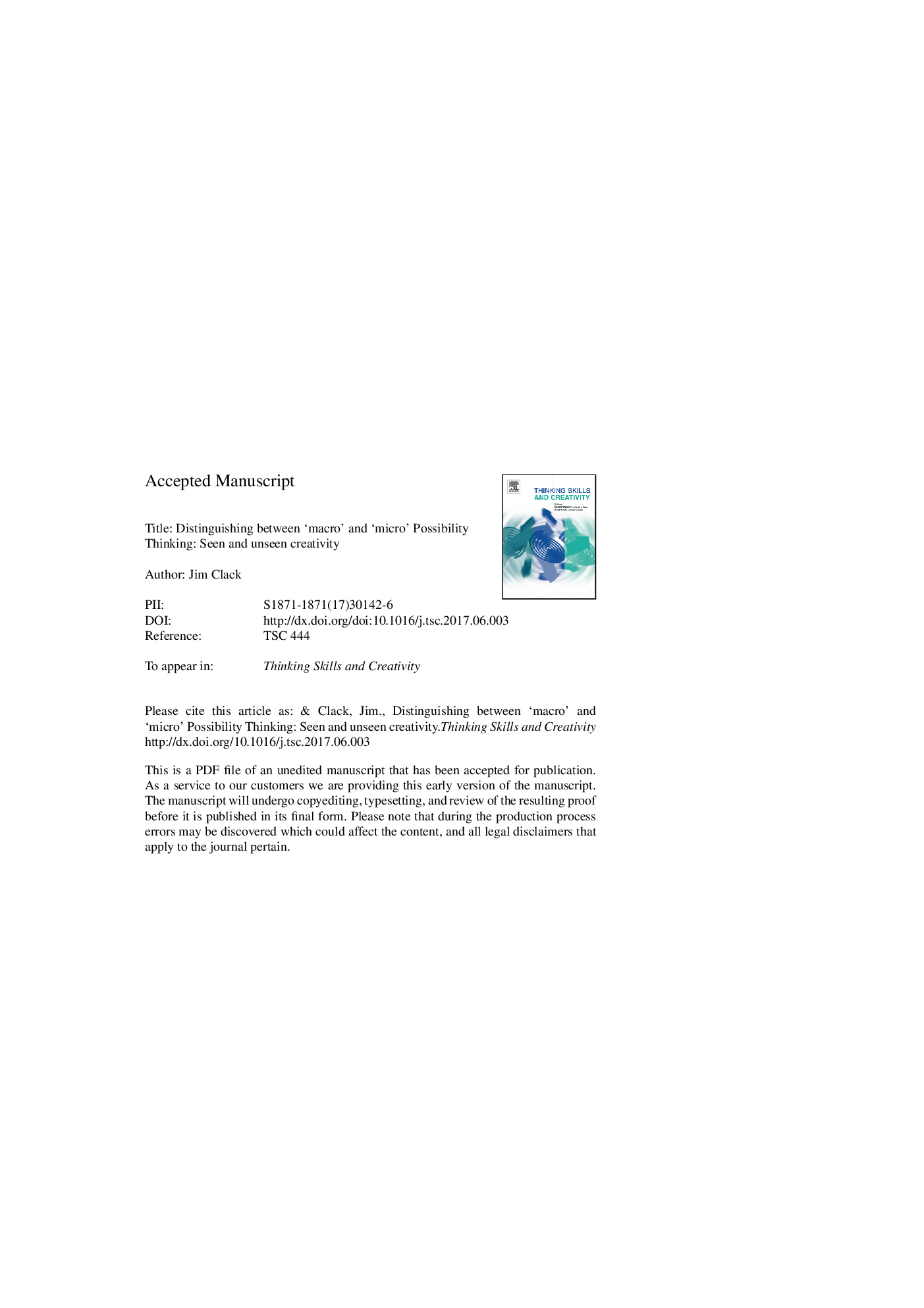| Article ID | Journal | Published Year | Pages | File Type |
|---|---|---|---|---|
| 4941814 | Thinking Skills and Creativity | 2017 | 18 Pages |
Abstract
This paper proposes a model that describes potential ways in which creativity may be manifest in the classroom. Building on the work by Craft and her colleagues (e.g. Chappell, Craft, Burnard, & Cremin, 2008; Craft, Cremin, Burnard, Dragovic, & Chappell, 2012), this paper uses empirical evidence from the author's PhD study (Clack, 2011), to propose further developments in the 'Possibility Thinking' model. It is argued that it is possible to characterise 'types' of Possibility Thinking activity. The first 'type' identified is 'macro' Possibility Thinking, characterised by 'large', observable events in the classroom. The second type, 'micro' Possibility Thinking, may be characterised as 'smaller', more thoughtful, personal moments that are less visible to an observer. Developing the existing model in this way helps provide insights into the creative process and as a result helps provide insights into how we may foster and develop creativity in the classroom and indeed in everyday life.
Keywords
Related Topics
Social Sciences and Humanities
Psychology
Developmental and Educational Psychology
Authors
Jim Clack,
